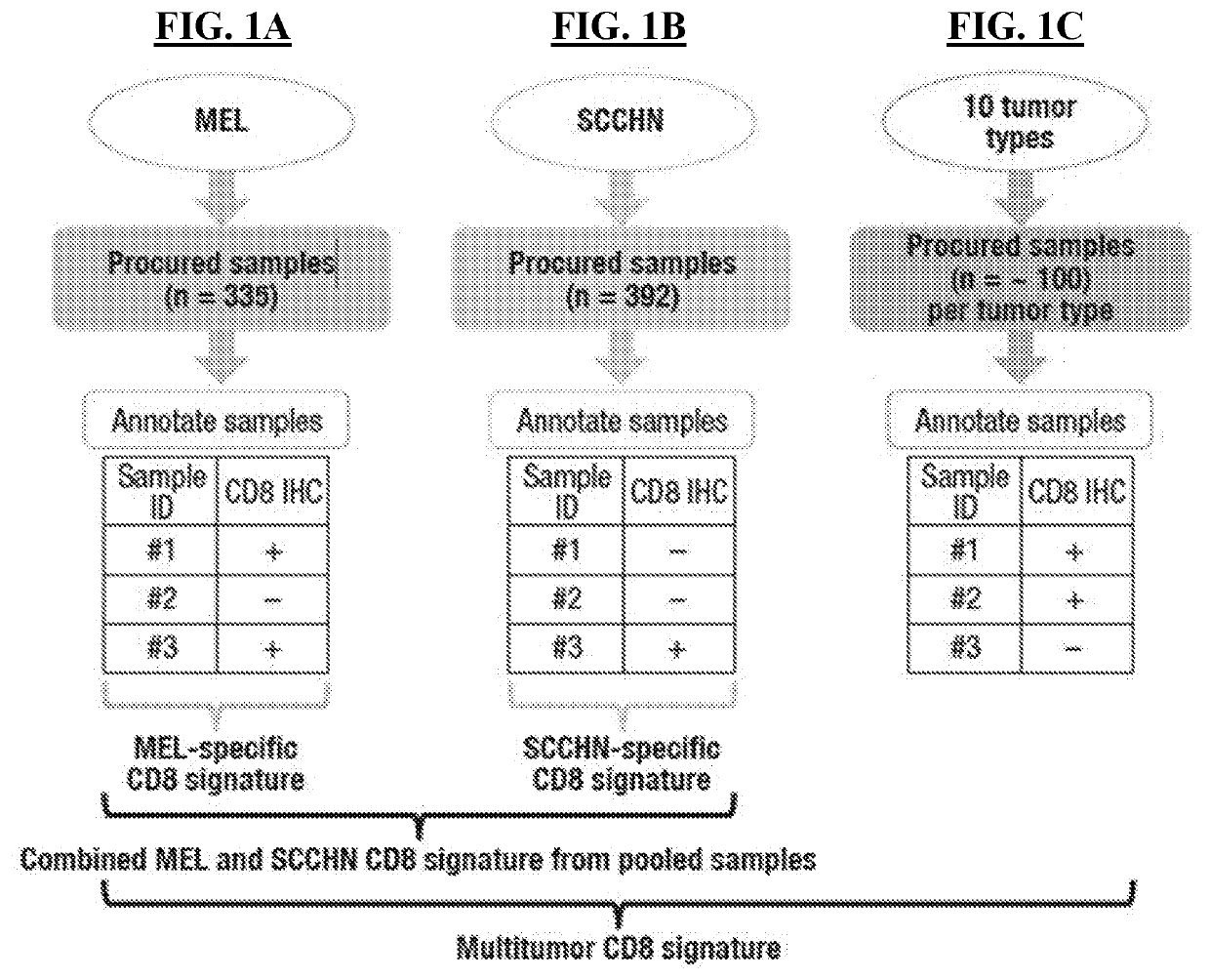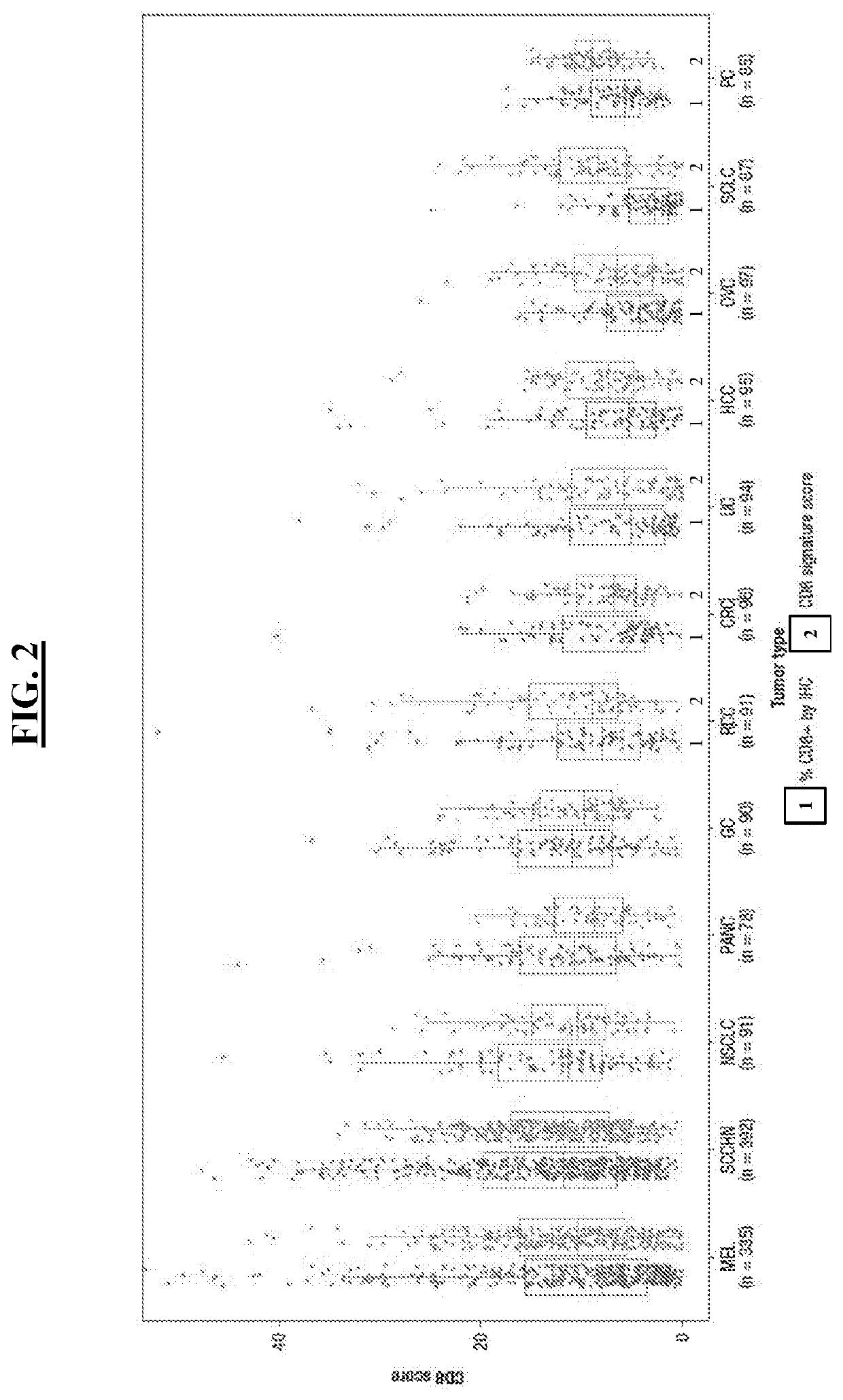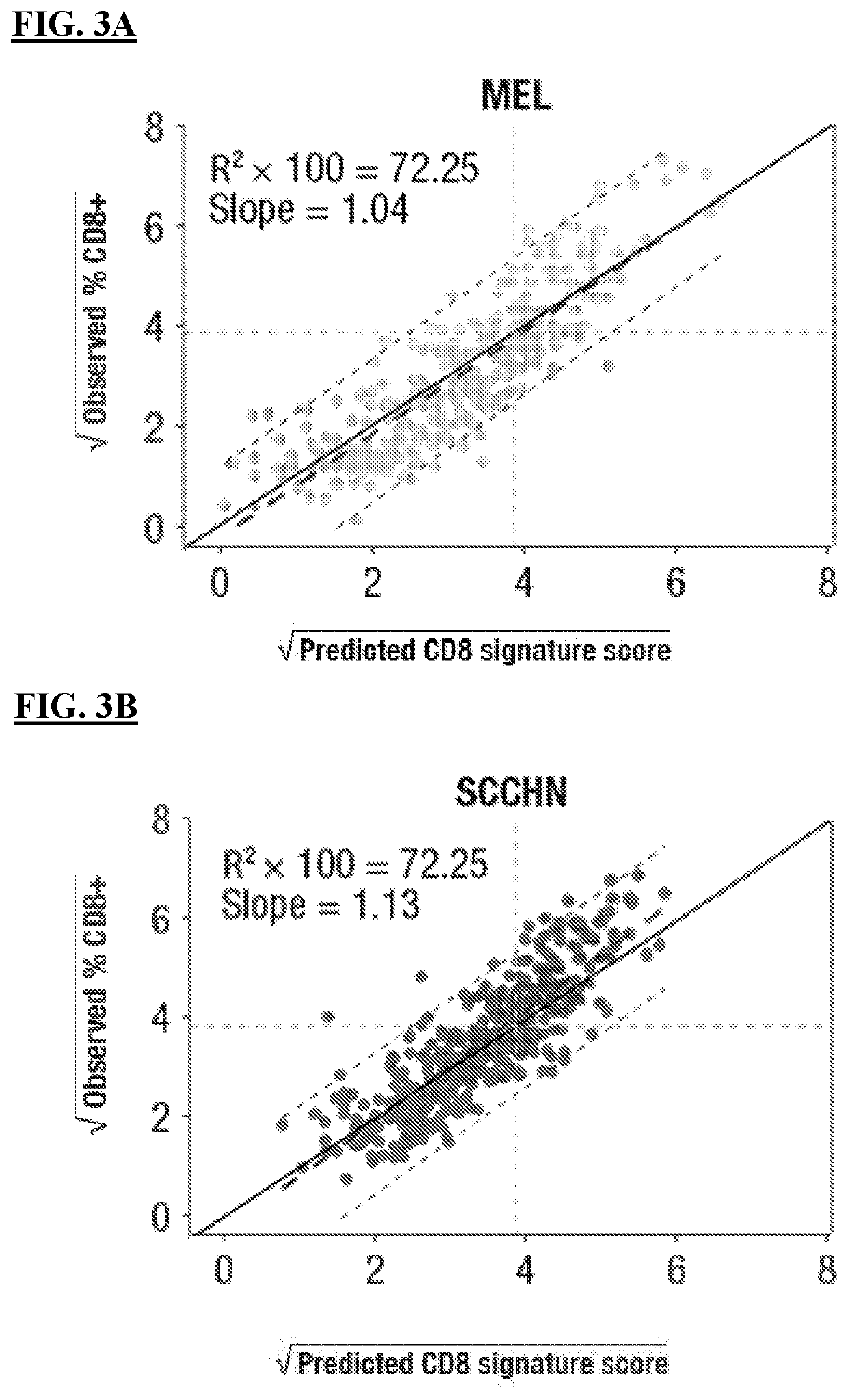Multi-tumor gene signature for suitability to immuno-oncology therapy
- Summary
- Abstract
- Description
- Claims
- Application Information
AI Technical Summary
Benefits of technology
Problems solved by technology
Method used
Image
Examples
example 1
[0246]An inflammatory phenotype in the tumor microenvironment (TME) has been associated with improved clinical outcomes in patients treated with immuno-oncology (I-O) therapy across multiple tumor types. Infiltration of CD8+ T cells is one of the surrogate markers for inflammation and can be assessed by employing immunohistochemistry (IHC) assays. However, IHC assays have limited capability to simultaneously interrogate multiple biomarkers.
[0247]Analyzing the transcriptome by gene expression profiling (GEP) can be used to identify signatures predictive of response to I-O therapy in patients with cancer. A multiparameter tumor inflammation assay based on GEP may offer a more robust characterization of inflammation by simultaneously interrogating multiple genes, thereby extending the utility of single-gene expression analysis or protein-based IHC assessment to characterize the TME.
[0248]Objectives
[0249]The primary objective of this study is to develop a GEP-based, investigational-use-...
example 2
[0263]Across multiple tumor types, an inflammatory phenotype in the tumor microenvironment (TME) has been associated with improved clinical efficacy in patients treated with immuno-oncology (I-O) therapies (see Darvin P, et al. Exp Mol Med 2018; 50:165). Infiltration of CD8+ T cells can be used as a surrogate marker for inflammation and is often assessed using immunohistochemistry (IHC) (see, e.g., Barnes et al, Br J Cancer 2017; 117:451-460; and Stoll et al. Oncotarget 2015; 6:11894-11909). Interrogation of multiple biomarkers by IHC has its limitations. Simultaneous analysis of multiple transcripts in the TME using gene expression profiling (GEP) may provide a robust characterization of inflammation.
[0264]A number of GEP platforms are available, including RNA sequencing (RNA-seq) and GEP panels targeting select sets of genes or pathways. However, cross-platform consistency remains to be determined.
[0265]Gene expression signatures indicative of inflammation in the TME have been der...
PUM
 Login to View More
Login to View More Abstract
Description
Claims
Application Information
 Login to View More
Login to View More - R&D
- Intellectual Property
- Life Sciences
- Materials
- Tech Scout
- Unparalleled Data Quality
- Higher Quality Content
- 60% Fewer Hallucinations
Browse by: Latest US Patents, China's latest patents, Technical Efficacy Thesaurus, Application Domain, Technology Topic, Popular Technical Reports.
© 2025 PatSnap. All rights reserved.Legal|Privacy policy|Modern Slavery Act Transparency Statement|Sitemap|About US| Contact US: help@patsnap.com



